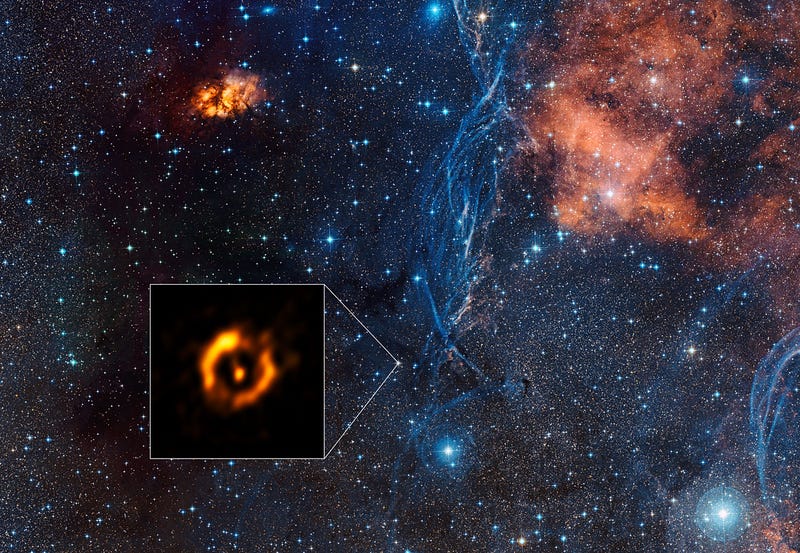
If you needed a reminder of just how powerful our telescopes have become, few images tell it like this cosmic gem. No, that isn’t the Eye of Sauron glowering at us from across the void: It’s the sharpest view yet of a debris disk surrounding a dying star 4,000 light years away. And it hints at an incredible possibility.
Encircling very young and very old stars alike are vast clouds of cosmic dust, ejected by powerful stellar winds. Astronomers are keenly interested in the disks around new stars, because they’re the cradle in which planetary systems like our own form. (In fact, scientists recently captured the first-ever image of a planet coalescing inside such a disk.)
We know very little about their end-life counterparts, however. Can dying stars birth a final generation of planets before flickering out? We won’t know the answer until we peer into their dusty backyards.
To that end, astronomers have taken a major step forward with the image above. The inset depicts the debris disk surrounding IRAS 08544-4431, a binary star buried in the Vela constellation some 4,000 light years from home. Writing in the journal Astronomy and Astrophysics, the team behind the image explains that this particular disk is indeed quite similar to those found around young stars, lending weight to the hypothesis that aging stellar bodies have what it takes to churn out a final crop of planets. But, they say, more work will be needed to verify the possibility.
There’s one other reason to be fascinated by this image. It took some mind-bogglingly powerful optics to capture it. To enhance the resolution, astronomers combined multiple views of the same patch of sky, captured with the Very Large Telescope Interferometer at the at ESO’s Paranal Observatory in Chile. And they used a new technique to remove all that pesky glare from the central stars, so that the disk itself could be resolved.
“The resolution is so high that, for comparison, we could determine the size and shape of a one euro coin seen from a distance of two thousand kilometres,” study co-author Jacques Kluska said in a statement.
With that sort of vision at our disposal, I think it’s reasonable to assume that if planets are hiding in these stellar entrails, we’ll find them.
Follow the author @themadstone